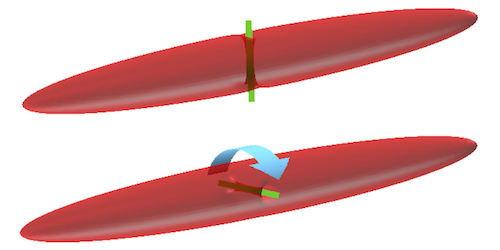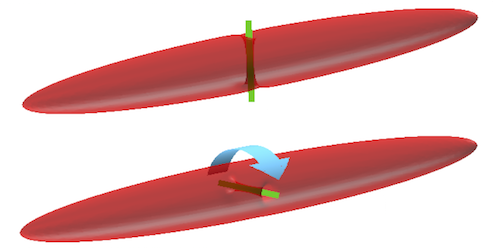Quantum Vortex Twirls Like a Spinning Top
Spin a top on a flat surface, and it will precess around a vertical axis while it spins rapidly around its own axis. Russell Bisset from the University of Trento, Italy, and colleagues now show—with experiments backed up by numerical simulations—that a particular type of quantum vortex can precess like a spinning top.
The vortex in question is a line in a cigar-shaped Bose-Einstein condensate around which the condensate’s wave function twists. This line pierces the condensate along one of its geometrical axes, like a sewing needle pierces a roll of fabric. Bisset and co-workers created such a vortex line in a condensate of about 20 million sodium atoms by using shock cooling, which cools the atoms more quickly than the cooling process that is usually used to create the condensate. Next, using a method that imaged the condensate every 12 ms but left it otherwise intact, the team tracked the position and orientation of the vortex line as it evolved in time. They found that the vortex line, which formed along one of the condensate’s short axes, revolved around the condensate’s long axis much like a spinning top precesses.
The team reproduced this precession behavior in numerical simulations of the system based on the Gross-Pitaevskii equation, which is commonly used to describe the dynamics of Bose-Einstein condensates. The findings provide novel tools to aid future experimental studies of vortex dynamics with minimally destructive imaging.
This research is published in Physical Review A.
–Ana Lopes
Ana Lopes is a Senior Editor of Physics.





